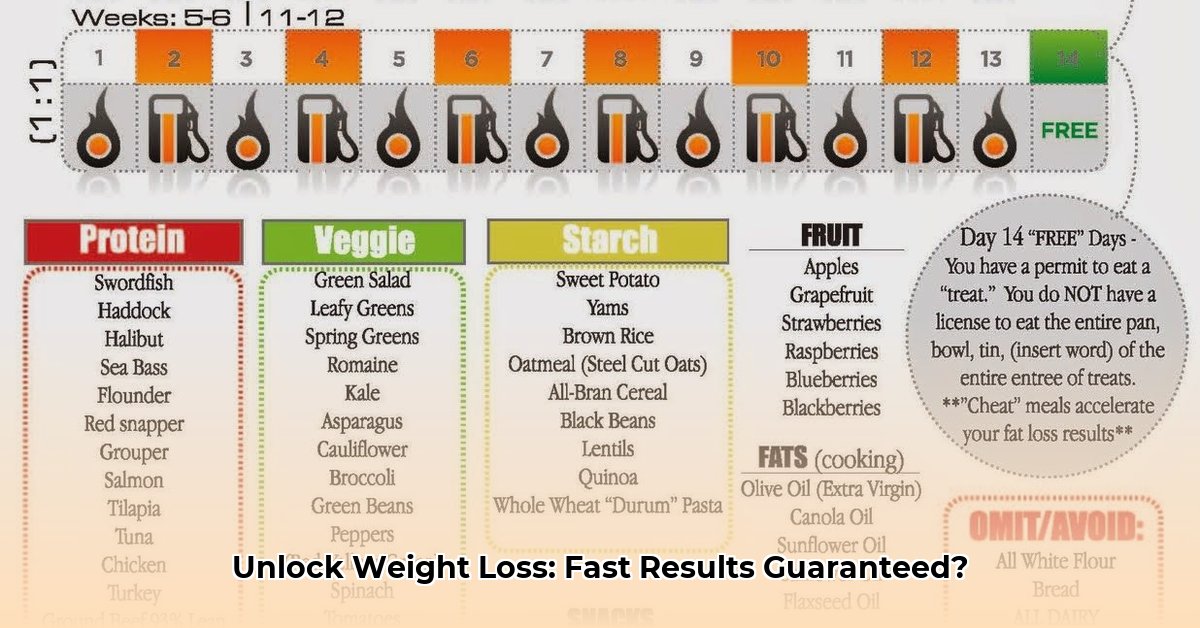
Carb Cycling: Your Personalized Fat Loss Plan
Frustrated with slow weight loss and ineffective diets? Carb cycling, a strategic approach to managing carbohydrate intake, may be the solution you've been searching for. This guide simplifies carb cycling, demonstrating how it can accelerate fat loss and improve energy levels. We'll explain the principles, guide you through using a carb cycling calculator, and help you create a personalized plan, complete with actionable strategies and safety precautions.
Understanding Carb Cycling: The Science Behind the Strategy
Carb cycling isn't a diet; it's a flexible eating approach involving alternating high and low carbohydrate days. High-carb days fuel workouts and replenish glycogen stores (your body's energy source). Low-carb days potentially enhance fat burning by reducing insulin levels. This cyclical pattern challenges your metabolism, potentially helping you overcome weight loss plateaus. However, individual results vary greatly depending on factors such as activity levels and metabolic rate. A personalized approach, facilitated by a calculator, is crucial for success.
Utilizing a Carb Cycling Calculator: A Step-by-Step Guide
Several online carb cycling calculators are available. These tools simplify the process by personalizing your carb cycling plan based on individual characteristics.
Step-by-Step Calculator Usage:
- Input Personal Data: Enter your current weight, height, activity level (sedentary, moderately active, very active), and weight loss goals. Accuracy is key!
- Review Macronutrient Recommendations: The calculator will generate personalized daily calorie targets and macronutrient ratios (carbohydrates, proteins, and fats) for high-carb and low-carb days.
- Customize Your Plan (Optional): While the calculator provides a starting point, feel free to make adjustments based on your preferences and how your body responds. Always prioritize whole, unprocessed foods.
Interpreting Your Results: Making Sense of Macronutrient Targets
The calculator's output provides a framework, not a rigid set of rules. Understanding the macronutrient targets – the grams of carbohydrates, protein, and fat for each day – is essential.
High-carb days emphasize complex carbohydrates such as whole grains (brown rice, quinoa, oats), fruits, and vegetables. Pair these with lean protein (chicken, fish, beans) and healthy fats (avocados, nuts, olive oil).
Low-carb days prioritize protein to maintain satiety, alongside plenty of non-starchy vegetables (broccoli, spinach, leafy greens) and healthy fats. Restricting carbohydrates on low-carb days can potentially promote fat burning.
Designing Your Personalized Plan: Practical Strategies for Success
The calculator provides a foundation; now, let's build your personalized plan. A consistent approach is paramount, not perfection. Here's how:
- Detailed Meal Planning: Based on your daily macronutrient targets, plan your meals for high-carb and low-carb days. Use a food tracking app or notebook to stay organized.
- Prioritizing Whole Foods: Focus on unprocessed, whole foods to maximize nutrient intake and minimize potential negative effects. Minimizing processed foods is crucial for optimal results.
- Hydration is Non-Negotiable: Drink plenty of water throughout the day, particularly on low-carb days. Adequate hydration supports metabolic function and overall well-being.
- Flexibility and Adaptability: Life happens. Don't let minor deviations derail your progress. Adjust your plan as needed while maintaining the overall principles of carb cycling. Consistency, not rigidity, is key.
Important Considerations: Safety and Cautions
Before starting carb cycling, consult your doctor or a registered dietitian. They can assess your suitability for this approach, particularly if you have underlying medical conditions.
Potential side effects, such as fatigue, headaches, or mood swings, can occur. Listen to your body. If you experience any negative changes, modify your plan or discontinue carb cycling.
Tracking Your Progress & Making Adjustments: A Continuous Process
Regularly monitor your weight, energy levels, and overall well-being. Are you noticing progress? If not, refine your plan by adjusting the macronutrient ratios or the cycling schedule. Remember, healthy weight loss is a gradual journey.
Conclusion: A Sustainable Approach to Weight Loss
A carb cycling calculator is a valuable tool for tailoring your approach to this eating strategy. However, its effectiveness depends on your understanding of the principles involved, your commitment to a balanced diet, and regular monitoring. Carb cycling, when combined with a holistic lifestyle and professional guidance, can be a powerful tool for achieving your weight loss goals. Remember – results may vary, and consistency is key!